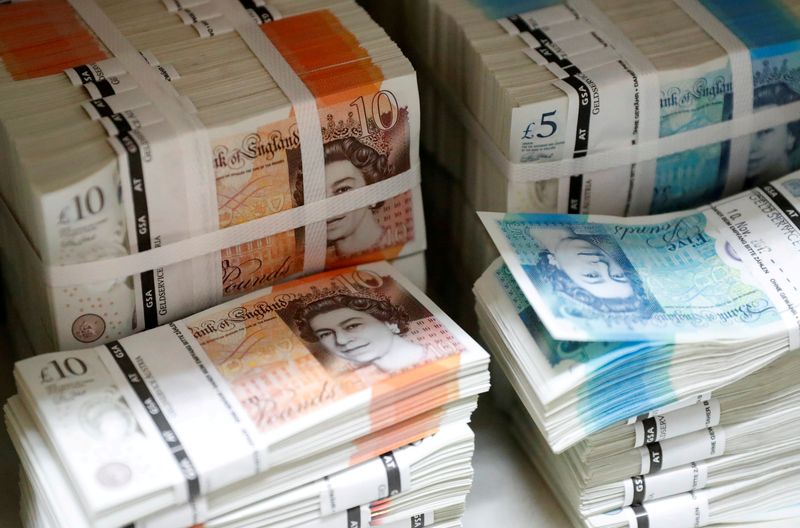By Lucy Raitano
LONDON (Reuters) - Sterling ticked higher versus the dollar on Wednesday after data showed Britain's economy grew modestly in April, as traders remained unnerved by an earlier release signalling sticky inflation.
By 0927 GMT, the pound was 0.2% up against the dollar and 0.15% higher against the euro at 85.49 pence.
Wednesday's Office for National Statistics figures showed retailers and the film industry helped Britain's economy grow by 0.2% month-on-month in April, pointing to slow growth rather than a recession. But contractions were seen in manufacturing and construction.
"The figures were pretty good. It's encouraging news if you compare it to where we were at the end of last year with the energy crisis, when the outlook for the UK economy looked extremely grim," said Francesco Pesole, FX strategist at ING.
But he said the GDP reading remained overshadowed by Tuesday's wage data, which "it definitely points to red-hot flaring alarms of inflation not cooling down at all."
That showed annual UK wage growth at 7.2%, excluding bonuses, in the three months to April - the biggest increase on record excluding data during the COVID-19 pandemic and prompting traders to ramp up bets on how many rate hikes the BoE has left in its tightening cycle.
They see a 79% chance of a 25-basis-point rate rise at next week's meeting, and a 21% chance of a 50 bps rise, with bets that the BoE's Bank Rate - currently at 4.5% - could go as high as 5.7% by the end of 2023.
The BoE has already raised the rate 12 times since late 2021 from 0.1% to try to calm inflation.
BoE Governor Andrew Bailey said the wage data showed the labour market was "very tight" and said inflation had been slower to fall than the central bank had hoped.
UK short-dated gilt yields inched up to a 15-year high after markets opened on Wednesday, with the mortgage market already showing signs of strain in recent weeks.

The next important read for UK inflation will be the consumer price index on June 21, a day before the BoE convenes.
The latest developments mark a divergence from the trajectory expected from the Federal Reserve, widely expected to leave interest rates unchanged later on Wednesday for the first time since March 2022.